
How to Use dc-dc buck converter 25w module: Examples, Pinouts, and Specs
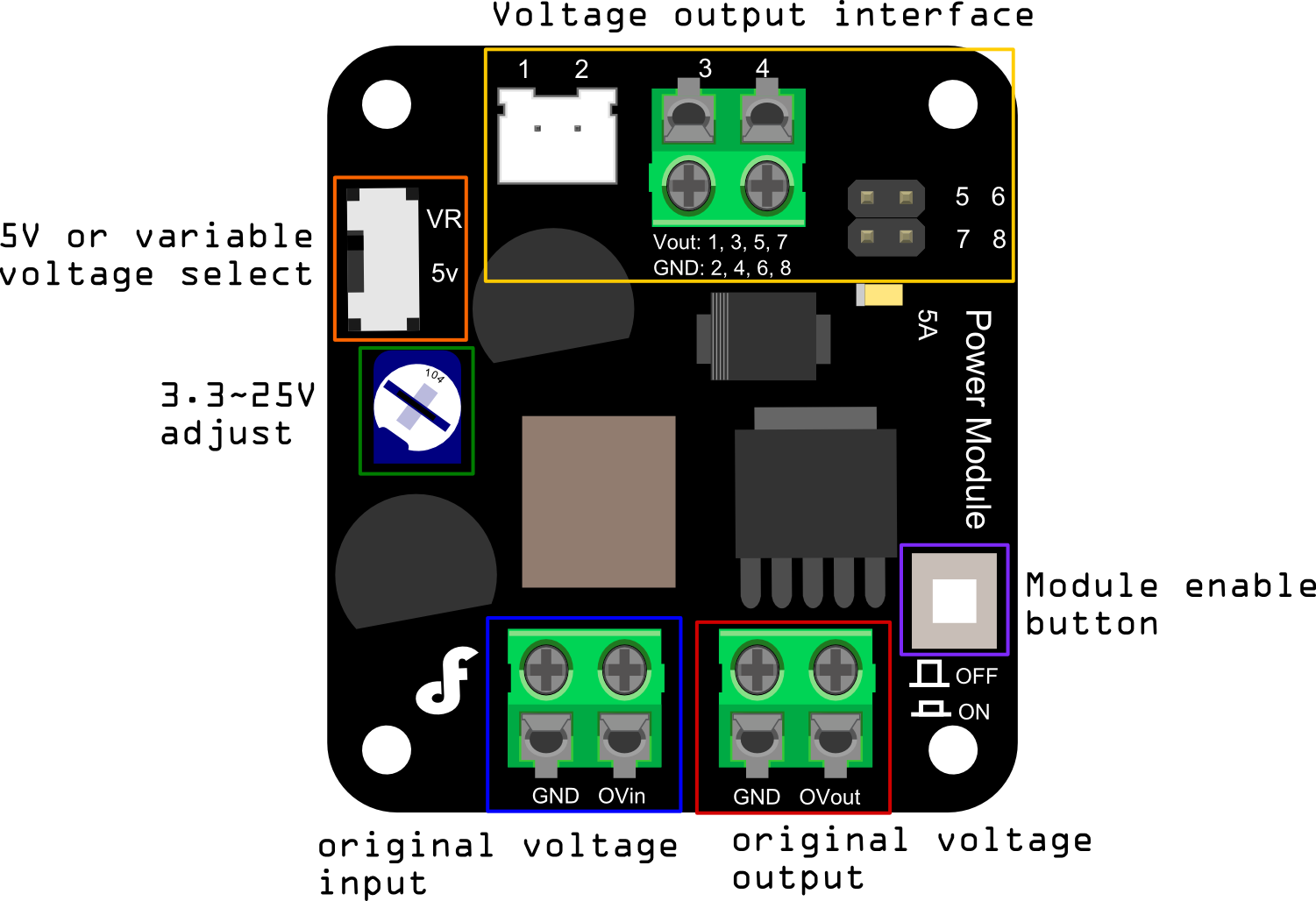
 Design with dc-dc buck converter 25w module in Cirkit Designer
Design with dc-dc buck converter 25w module in Cirkit DesignerIntroduction
The DC-DC Buck Converter 25W Module (Manufacturer Part ID: DFR0205) by DFRobot is a high-efficiency voltage step-down module designed to convert a higher DC input voltage to a lower DC output voltage. This module is capable of delivering up to 25 watts of power, making it ideal for applications requiring efficient power regulation.
Explore Projects Built with dc-dc buck converter 25w module
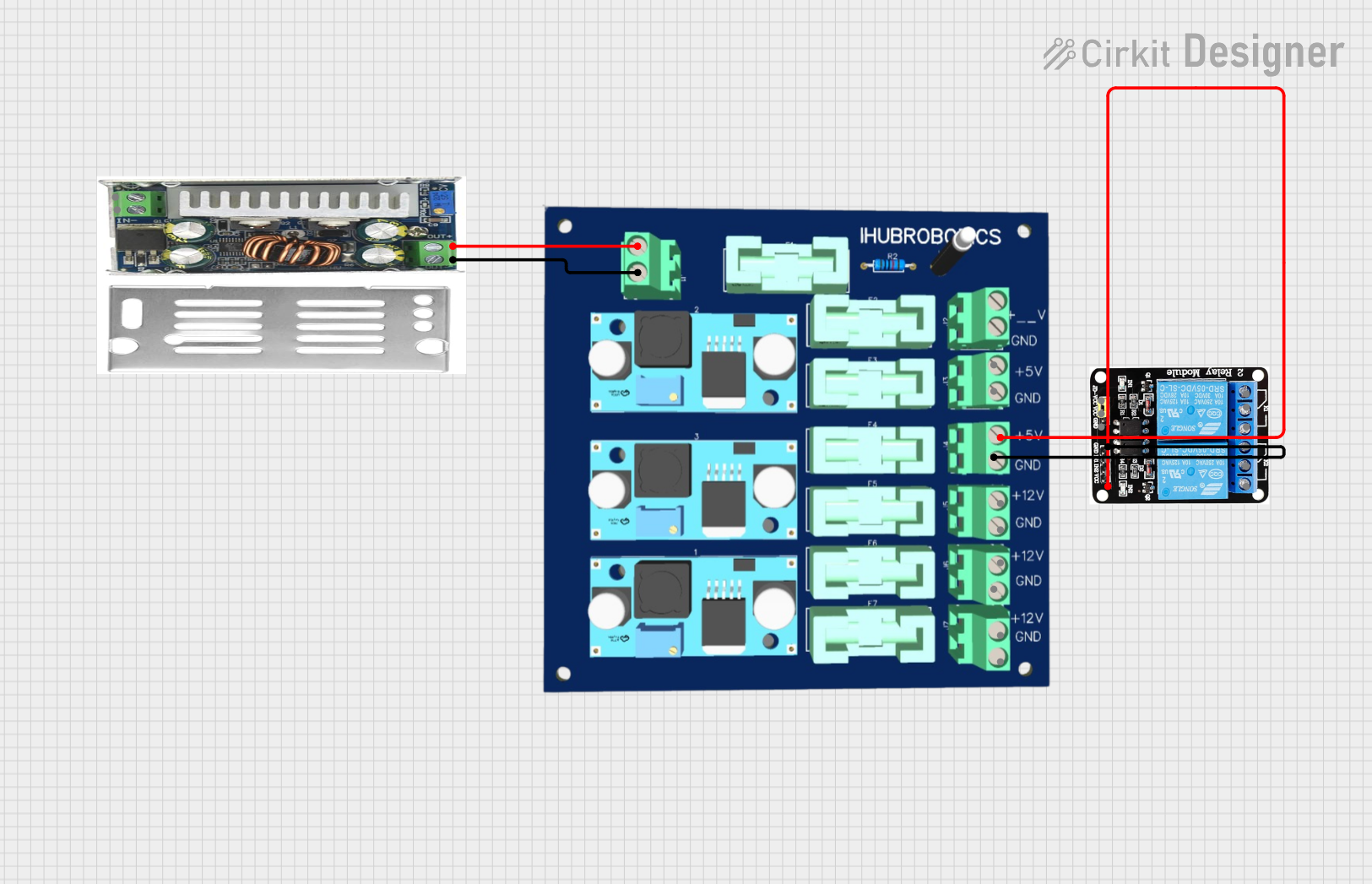
 Open Project in Cirkit Designer
Open Project in Cirkit Designer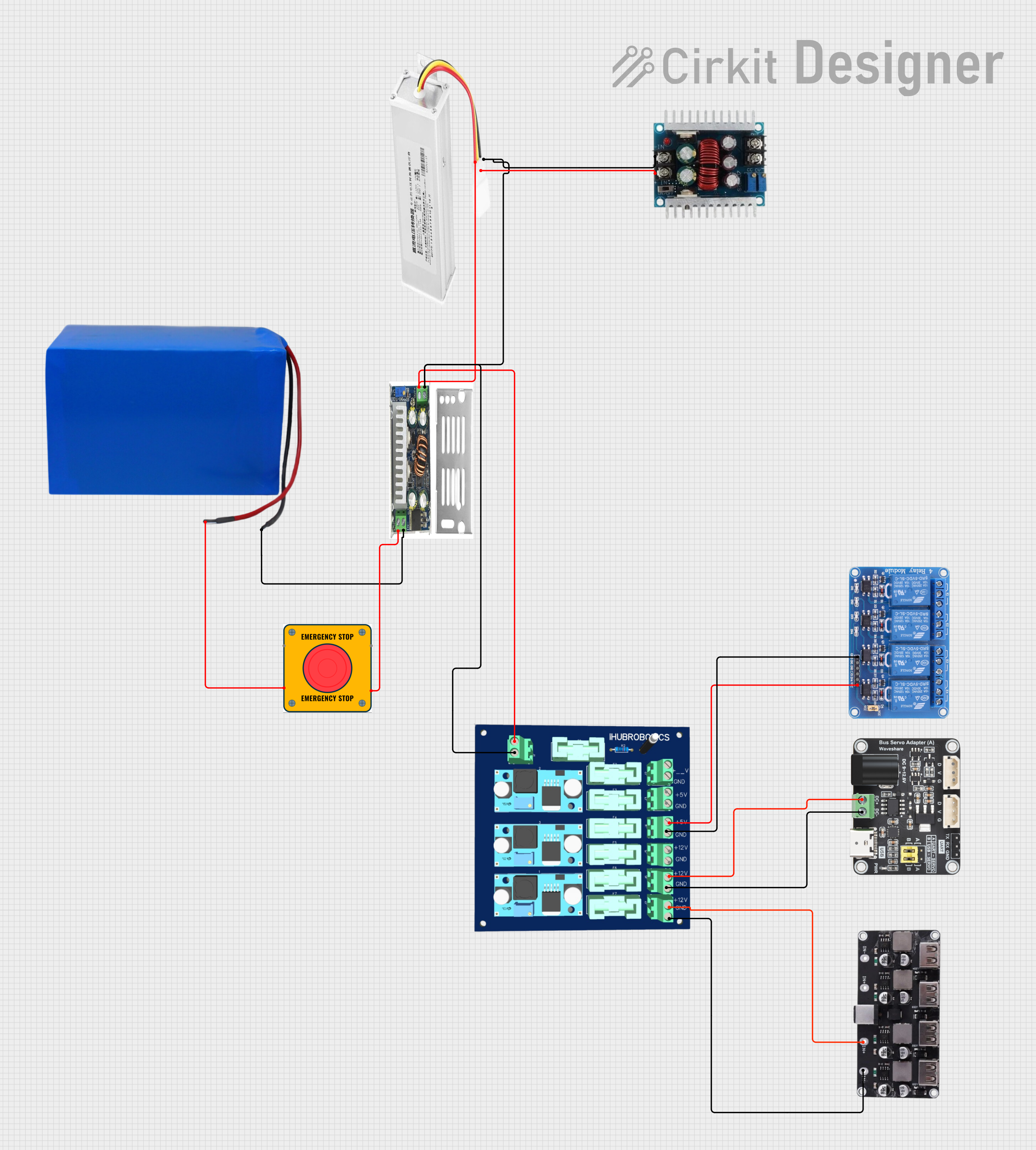
 Open Project in Cirkit Designer
Open Project in Cirkit Designer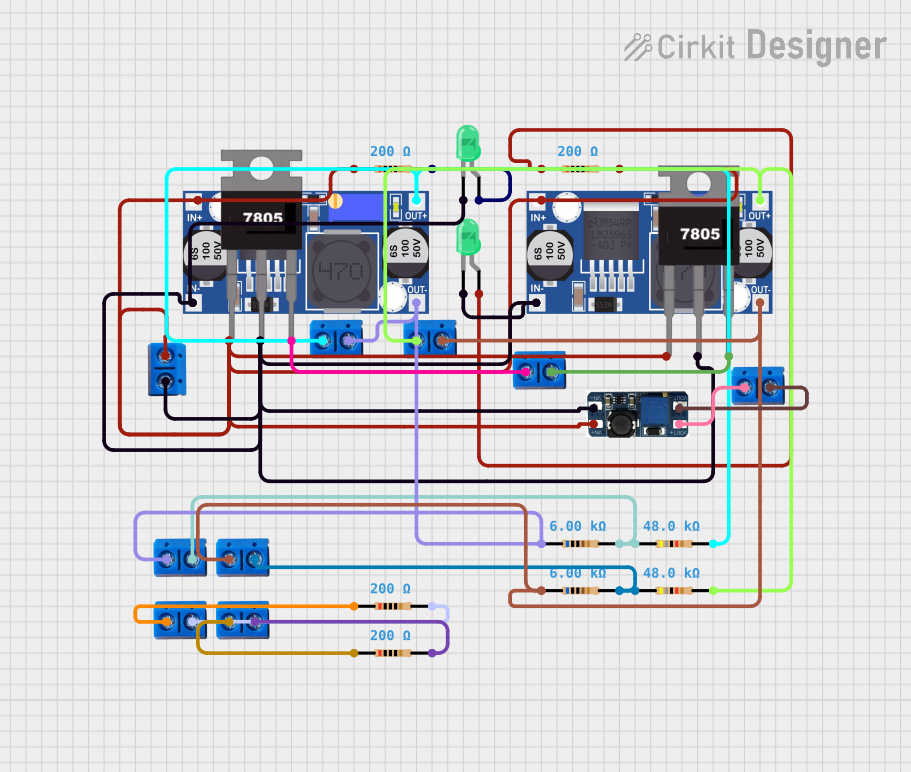
 Open Project in Cirkit Designer
Open Project in Cirkit Designer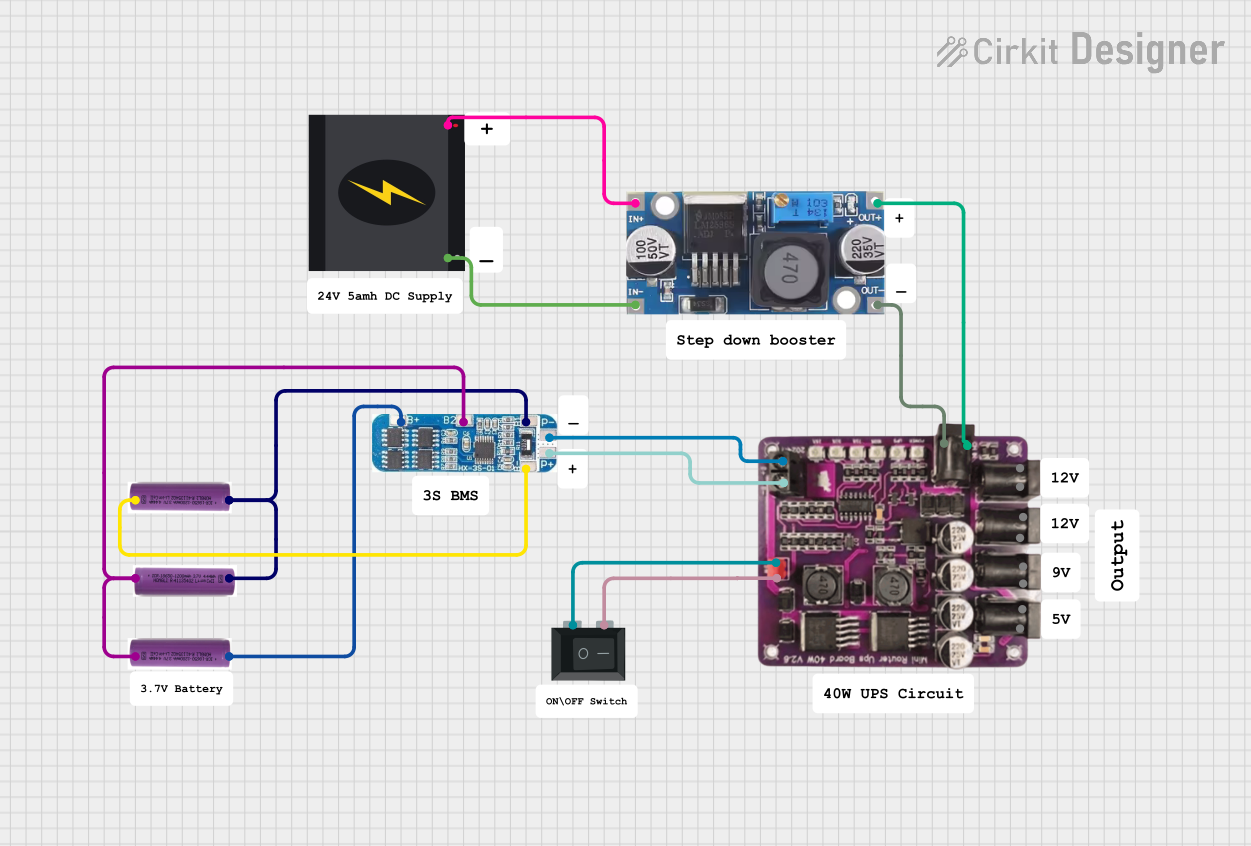
 Open Project in Cirkit Designer
Open Project in Cirkit DesignerExplore Projects Built with dc-dc buck converter 25w module

 Open Project in Cirkit Designer
Open Project in Cirkit Designer
 Open Project in Cirkit Designer
Open Project in Cirkit Designer
 Open Project in Cirkit Designer
Open Project in Cirkit Designer
 Open Project in Cirkit Designer
Open Project in Cirkit DesignerCommon Applications and Use Cases
- Powering low-voltage devices from higher-voltage sources (e.g., 12V to 5V conversion)
- Battery-powered systems to regulate voltage levels
- Robotics and IoT projects
- LED lighting systems
- Arduino and microcontroller-based projects
Technical Specifications
The following table outlines the key technical details of the DFR0205 module:
| Parameter | Value |
|---|---|
| Input Voltage Range | 6V to 32V DC |
| Output Voltage Range | 1.25V to 32V DC (adjustable) |
| Maximum Output Power | 25W |
| Maximum Output Current | 5A (with proper heat dissipation) |
| Efficiency | Up to 96% |
| Switching Frequency | 150 kHz |
| Operating Temperature | -40°C to +85°C |
| Dimensions | 43mm x 21mm x 14mm |
Pin Configuration and Descriptions
The DFR0205 module has the following pin layout:
| Pin Name | Description |
|---|---|
| VIN+ | Positive input voltage terminal (connect to the higher DC voltage source) |
| VIN- | Negative input voltage terminal (connect to the ground of the DC voltage source) |
| VOUT+ | Positive output voltage terminal (connect to the load's positive terminal) |
| VOUT- | Negative output voltage terminal (connect to the load's ground terminal) |
Usage Instructions
How to Use the Component in a Circuit
Connect the Input Voltage:
- Connect the VIN+ pin to the positive terminal of your DC power source.
- Connect the VIN- pin to the ground terminal of your DC power source.
- Ensure the input voltage is within the range of 6V to 32V DC.
Connect the Output Voltage:
- Connect the VOUT+ pin to the positive terminal of your load.
- Connect the VOUT- pin to the ground terminal of your load.
Adjust the Output Voltage:
- Use the onboard potentiometer to adjust the output voltage.
- Turn the potentiometer clockwise to increase the output voltage and counterclockwise to decrease it.
- Use a multimeter to measure the output voltage while adjusting to ensure accuracy.
Heat Dissipation:
- For currents above 3A, ensure proper heat dissipation by attaching a heatsink or using active cooling (e.g., a fan).
Important Considerations and Best Practices
- Input Voltage: Ensure the input voltage is always higher than the desired output voltage.
- Current Limitation: Do not exceed the maximum output current of 5A. Use proper cooling for high-current applications.
- Polarity: Double-check the polarity of the input and output connections to avoid damage to the module.
- Load Testing: Test the module with a dummy load before connecting sensitive devices.
Example: Using the DFR0205 with an Arduino UNO
The DFR0205 can be used to power an Arduino UNO by stepping down a 12V DC input to 5V DC. Below is an example circuit and Arduino code to blink an LED:
Circuit Connections
- Connect a 12V DC power source to the VIN+ and VIN- pins of the DFR0205.
- Adjust the output voltage to 5V DC using the potentiometer.
- Connect the VOUT+ pin to the Arduino UNO's 5V pin.
- Connect the VOUT- pin to the Arduino UNO's GND pin.
- Connect an LED to pin 13 of the Arduino UNO with a 220-ohm resistor in series.
Arduino Code
// Blink an LED connected to pin 13 of the Arduino UNO
// Ensure the DFR0205 module is providing a stable 5V to the Arduino
void setup() {
pinMode(13, OUTPUT); // Set pin 13 as an output
}
void loop() {
digitalWrite(13, HIGH); // Turn the LED on
delay(1000); // Wait for 1 second
digitalWrite(13, LOW); // Turn the LED off
delay(1000); // Wait for 1 second
}
Troubleshooting and FAQs
Common Issues and Solutions
No Output Voltage:
- Cause: Incorrect input connections or insufficient input voltage.
- Solution: Verify the polarity and ensure the input voltage is within the specified range.
Output Voltage Fluctuations:
- Cause: Load exceeds the module's current capacity or poor heat dissipation.
- Solution: Reduce the load or improve heat dissipation with a heatsink or fan.
Module Overheating:
- Cause: High current draw without proper cooling.
- Solution: Attach a heatsink or use active cooling for currents above 3A.
Cannot Adjust Output Voltage:
- Cause: Faulty potentiometer or incorrect input voltage.
- Solution: Check the input voltage and ensure it is higher than the desired output voltage. If the issue persists, inspect the potentiometer.
FAQs
Q1: Can the DFR0205 be used with a battery as the input source?
A1: Yes, the module can be powered by a DC battery as long as the voltage is within the range of 6V to 32V.
Q2: What is the maximum efficiency of the module?
A2: The module can achieve an efficiency of up to 96%, depending on the input and output voltage difference and the load.
Q3: Can I use this module to power a Raspberry Pi?
A3: Yes, you can use the DFR0205 to step down a higher voltage (e.g., 12V) to 5V to power a Raspberry Pi. Ensure the output voltage is precisely set to 5V before connecting the Raspberry Pi.
Q4: Is the module protected against reverse polarity?
A4: No, the module does not have built-in reverse polarity protection. Always double-check your connections to avoid damage.
Q5: Can I use this module for AC voltage conversion?
A5: No, the DFR0205 is designed for DC-to-DC conversion only. Do not connect it to an AC power source.